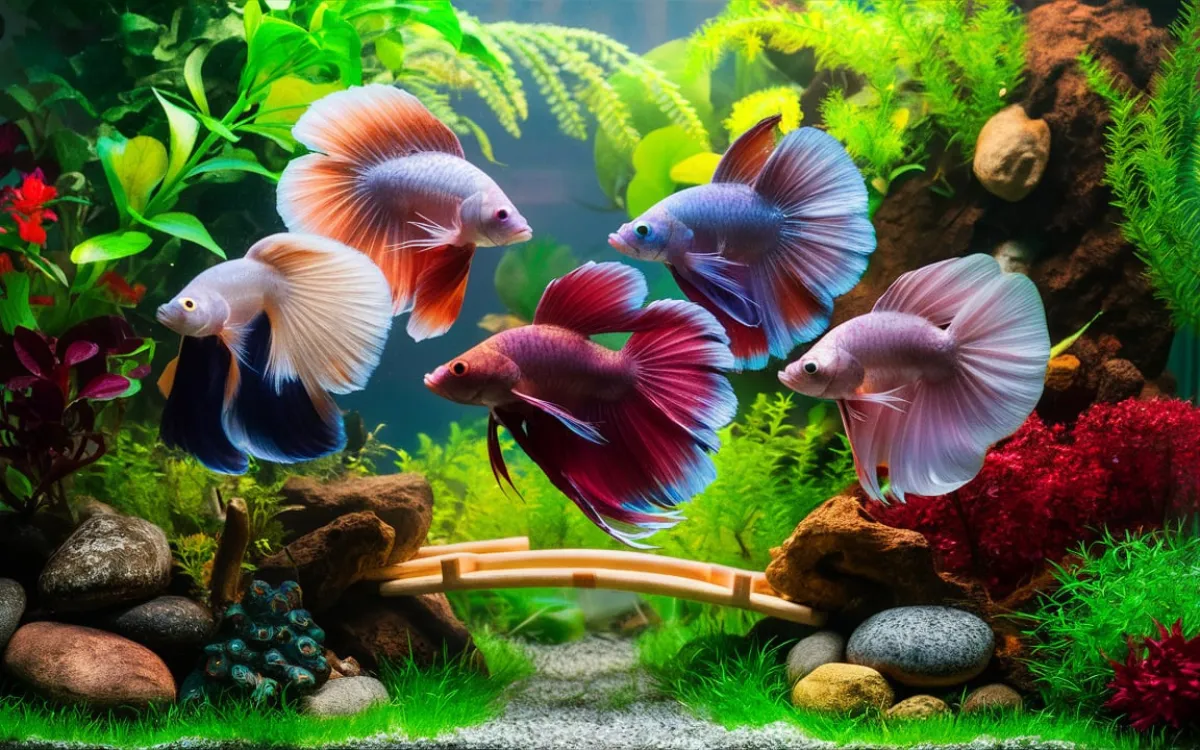A common question is: How many female bettas in a 10 gallon tank? Betta Fish Information will help you determine the ideal number for a 10-gallon tank, explore compatibility factors, and address the challenges of overcrowding. Get ready to create a thriving betta sorority!
Are Female Betta Fish Aggressive?
Female betta fish can be aggressive, but it’s not a guarantee. Their aggression levels vary greatly depending on several factors:
Factors Influencing Aggression:
Perhaps the most significant factor is individual personality. Some female bettas are naturally docile and prefer peaceful coexistence, while others are more assertive and territorial. It’s essential to recognize that each betta is an individual with its own unique personality.
Space is a critical factor in reducing aggression. A larger tank provides more room for the fish to spread out, reducing territorial disputes and creating a less stressful environment. A cramped tank can exacerbate aggression as fish feel confined and threatened.
Poor water quality can significantly impact betta behavior. Stress caused by poor water conditions, such as high ammonia levels or low oxygen levels, can make fish more prone to aggression. Maintaining clean and healthy water is essential for a peaceful sorority.
How Many Female Bettas In A 10 Gallon Tank?

While a 10-gallon tank might seem spacious enough for a few female bettas, it’s crucial to remember that overcrowding can have severe consequences for your fish. The maximum number of female bettas that should be housed in a 10-gallon tank is six. Exceeding this limit can lead to a cascade of negative effects, compromising the health and well-being of your fish.
The Dangers of Overcrowding:
Increased Aggression: When fish are cramped, they feel stressed and threatened, leading to heightened aggression. This can manifest as fin-nipping, chasing, and even biting, causing injuries and creating a stressful environment for all fish.
Fin-Nipping: Overcrowding can trigger fin-nipping behavior, where bettas nibble on each other’s fins, causing damage and potential infections. This behavior is often a sign of stress and territoriality.
Stress: Overcrowding creates a stressful environment for your fish. They may exhibit signs of stress, such as hiding, loss of appetite, and lethargy. Chronic stress can weaken their immune system, making them more susceptible to disease.
Compromised Water Quality: Overcrowding can quickly lead to a decline in water quality. With more fish producing waste, the tank’s filtration system may struggle to keep up, leading to elevated ammonia and nitrite levels, which are toxic to fish.
Prioritizing the Well-being of Your Bettas:
Always err on the side of caution when it comes to stocking your tank. Providing ample space for your bettas is essential for their health and happiness. A larger tank, such as a 15-gallon or 20-gallon, will offer more space and reduce the risk of aggression and stress.
10-Gallon Betta Sorority Tank Conditions
A 10-gallon tank is the absolute minimum for a single betta, and it’s crucial to remember that when setting up a betta sorority. Overcrowding a tank can lead to a stressful environment, making it difficult to maintain water quality and increasing the risk of disease.
Beyond tank size, here are some essential factors to consider for a healthy and happy betta sorority:
Temperature
Betta fish thrive in warm water, ideally between 76 and 82 degrees Fahrenheit. Maintaining this temperature range helps prevent stress-induced infections and keeps your fish happy and healthy. An aquarium heater makes temperature regulation a breeze.
Water Chemistry
Just like humans, bettas have specific water quality preferences. Maintaining a pH level between 6.5 and 7.5 is ideal for their well-being. Regular testing with a reliable pH kit is essential, and you may need to adjust the pH using appropriate solutions if it falls outside this range. Consistent water chemistry ensures your fish are swimming in a healthy environment.
Hiding Places
Betta fish, by nature, are shy and prefer to have places to hide and feel secure. Providing plenty of hiding spots is crucial for their well-being. Live plants, caves, rocks, driftwood, and even fake plants can all create a sense of security. Arrange these hiding places strategically to break up lines of sight, reducing aggression and creating a more peaceful environment.
Filtration
A powerful filter is the backbone of a clean and healthy tank. It works tirelessly to remove waste, such as leftover food and fish excrement, which can quickly pollute the water. A strong filter helps prevent the buildup of harmful ammonia and nitrite levels, reducing the risk of disease and ensuring your bettas have a long and healthy life. Choose a filter appropriate for the size of your tank and ensure it’s properly maintained.
Regular Water Changes
Even with a powerful filter, regular water changes are essential for maintaining optimal water quality. Aim to change at least 25% of the tank water twice a month. This helps remove accumulated waste, replenish essential minerals, and keep the water fresh and healthy for your bettas.
By following these guidelines, you can create a thriving and peaceful environment for your female betta sorority.
Conclusion
Creating a successful betta sorority in a 10-gallon tank requires careful planning, attentive observation, and a commitment to providing a healthy and stimulating environment. Remember, the ideal number of female bettas for a 10-gallon tank is six, but always prioritize the well-being of your fish.

Related Posts
Betta Fish Laying at Bottom of Tank: Causes and Solutions
Unhealthy vs. Healthy Betta Fish: A Way to Spot the Signs
The Ideal Betta Fish Water Temperature for Healthy